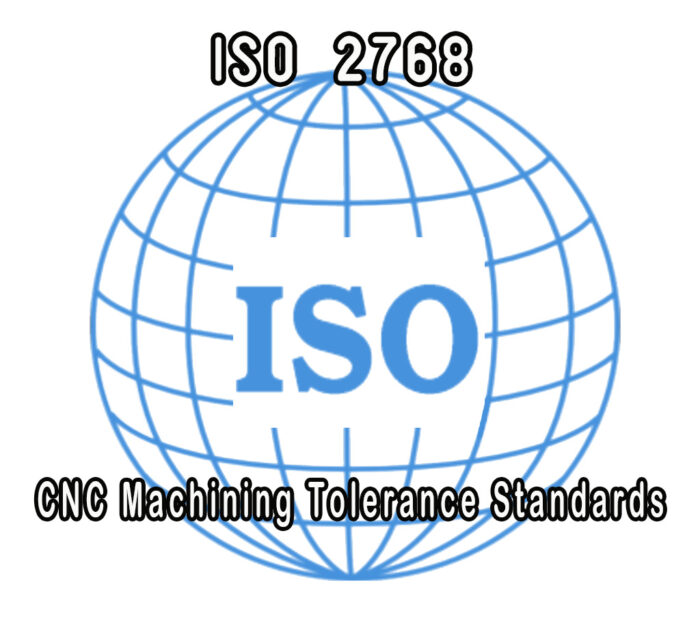CNC Machining Tolerance Standards, ISO 2768
Table of Contents
- What is ISO 2768?
- Why is ISO 2768 Standard So Important?
- Part 1 of ISO 2768: Linear and Angular Dimensions.
- Part 2 of ISO 2767: Geometrical Tolerances for Features
- Conclusion

Tolerance is an important concept in all manufacturing processes, from metal and plastic parts to complete designs.
Robotically-controlled CNC machining allows very precise control of the process, and close tolerances need to be maintained between different parts in order for them to fit together properly. This is achieved by setting tolerance thresholds for each dimension—with lower tolerances resulting in more accurate and precise manufacturing. The International Organization for Standardization (ISO) 2768 provides generalized baseline tolerance guidelines that are used as a reference when determining acceptable range of variation from the nominal dimensions.
- What is ISO 2768?
ISO 2768 is an important international manufacturing standard developed by the International Organization for Standardization. This standard simplifies the drawing process for CNC machining with laid out specifications for tolerances
CNC machining allows for high accuracy and tolerance in engineering products. To simplify technical drawings and streamline the manufacturing process, ISO 2768 provides two parts, ISO 2768-1 and ISO 2768-2, that define mechanical precision levels for CNC machining. With this international standard, designing and manufacturing of products become more accessible and efficient across companies worldwide.
These standards encompass Part 1 – General Tolerances for linear and angular dimensions, where the precision is classified as fine, medium, coarse, or very coarse.
Part 2 of geometrical tolerances refers to the precision levels or tolerance classes that are assigned certain features, with H, K and L being the most common.
Two commonly used tolerance standards are ISO 2768-mK and ISO 2768-fH, with the former more often used to create sheet metal parts, while the latter is more suitable for machined components. For example, ISO 2768-mK specifies that components must adhere to a “medium” tolerance range for Part 1 and a tolerance class “K” for Part 2.
- Why is ISO 2768 Standard So Important?
ISO 2768 is a document that sets out the principles and generalities of geometric tolerancing. It provides guidance for selecting and specifying acceptable levels of variation when manufacturing components, ensuring their features are within acceptable tolerances. This helps ensure parts are sufficiently accurate to meet their respective functional requirements.
Complying with the ISO 2768 Standard simplifies dimensional tolerances throughout the manufacturing process. Instead of specifying each feature and dimension, this standard establishes general tolerances for geometry and size to maintain tight control of every element. Following these standards prevents unclear ambiguity and removes the need to leave anything to judgement.
These standards may be amended or altered in cases where greater precision is needed for certain dimensions or pieces.
- Part 1 of ISO 2768: Linear and Angular Dimensions.
The standard is divided into two parts, of which Part 1 covers linear and angular dimensions.
f- Fine
m- Medium
c- coarse
v- very coarse
This set of dimensional parameters includes internal and external sizes, radii, chamfer heights and step sizes. By providing precise specifications on these dimensions, it allows parts to be manufactured with consistent accuracy and repeatability.
If a general tolerance standard following ISO 2768 is required, the designer will specify “ISO 2768-m” in the title block. Part of this international tolerance standard includes three precise tables regarding general dimensional tolerances. These tables provide guidance when determining to what extent certain ideas can be tolerated.
Table One—General Tolerance, Linear Dimensions
| Permissible deviations in mm for ranges in nominal lengths | Tolerance class designation (description) | |||
| f (fine) | m(medium) | c(coarse) | v(very coarse) | |
| 0.5 up to 3 | +-0.05 | +-0.1 | +-0.2 | – |
| Over 3 up to 6 | +-0.05 | +-0.1 | +-0.3 | +-0.5 |
| Over 6 up to 30 | +-0.1 | +-0.2 | +-0.5 | +-1.0 |
| Over 30 up to 120 | +-0.15 | +-0.3 | +-0.8 | +-1.5 |
| Over 120 up to 400 | +-0.2 | +-0.5 | +-1.2 | +-2.5 |
| Over 400 up to 1000 | +-0.3 | +-0.8 | +-2.0 | +-4.0 |
| Over 1000 up to 2000 | +-0.5 | +-1.2 | +-3.0 | +-6.0 |
| Over 2000 up to 4000 | – | +-2.0 | +-4.0 | +-8.0 |
Table Two—General Tolerance, External Radii and Chamfer Heights
As per ISO 2768, when indicating nominal sizes smaller than 0.5 mm, they should be clearly written next to their corresponding numerical value.
Table Three—Tolerance on Angular Dimensions
This table provides guidance on what should be accepted as an acceptable tolerance level for angles, ensuring they meet minimum quality requirements.
- Part 2 of ISO 2767: Geometrical Tolerances for Features
Besides circularity and cylindricity, his part includes general geometrical tolerance of straightness and flatness. Part 2 covers general geometrical tolerances with three classes — H, K and L — designed to simplify drawings.
ISO 2768 provides four tables of general tolerancing principles and specifications for parts created by material removal. These guidelines are distinct from fitting and clearance tolerances that use numbers and letters. ISO 2768-1 outlines nominal ranges and variations, while ISO 2768-2 states deviations according to specific standards.
Table Four—General Tolerance on Straightness and Flatness
ISO 2768 lays out the guidelines for flatness and straightness tolerances. To understand these, we need to consider the contact surfaces between an engine, its base and its compressor. Fairness and straightness boundaries are specified in the drawing according to how much variation is allowed. Straightness ranges dictate the level of twists or bends allowed across a surface, while flatness bounds govern any undesired bowings or dips between two points.
| Ranges of nominal lengths
in mm |
Tolerance Class | ||
| H | K | L | |
| Up to 10 | 0.02 | 0.05 | 0.1 |
| Above 10 to 30 | 0.05 | 0.1 | 0.2 |
| Above 30 to 100 | 0.1 | 0.2 | 0.4 |
| Above 100 to 300 | 0.2 | 0.4 | 0.8 |
| Above 300 to 1000 | 0.3 | 0.6 | 1.2 |
| Above 1000 to 3000 | 0.4 | 0.8 | 1.6 |
Table Five—General Tolerance on Perpendicularity
As it pertains to perpendicularity, this standard outlines the guidelines for acceptable distance units such as inches or millimeters, providing general tolerances that must be met during manufacturing.
| Ranges of nominal lengths
in mm |
Tolerance Class | ||
| H | K | L | |
| Up to 10 | 0.2 | 0.4 | 0.6 |
| Above 10 to 30 | 0.3 | 0.6 | 1.0 |
| Above 30 to 100 | 0.4 | 0.8 | 1.5 |
| Above 100 to 300 | 0.5 | 1.0 | 2.0 |
Table Six—General Tolerance on Symmetry
ISO 2768 provides the general tolerances for engineering design involving multiple surfaces and features that should remain symmetrical across a plane. This table outlines all permissible deviations that can be made to these features.
| Ranges of nominal lengths
in mm |
Tolerance Class | ||
| H | K | L | |
| Up to 10 | 0.5 | 0.6 | 0.6 |
| Above 10 to 30 | 0.5 | 0.6 | 1.0 |
| Above 30 to 100 | 0.5 | 0.8 | 1.5 |
| Above 100 to 300 | 0.5 | 1.0 | 2.0 |
Table Seven—General Tolerance on Circular Run-Out
Table 7 of this standard pertains to run-out, which refers to the total allowable variation in a surface when it is turned around an axis.
| Ranges of nominal lengths
in mm |
Tolerance Class | ||
| H | K | L | |
| Up to 10 | 0.1 | 0.2 | 0.5 |
- Conclusion
ISO 2768 is an international standard used in the manufacturing industry to simplify product design and production by setting tolerance values for essential geometric features. Tolerance is a key factor in product design, and this standard helps ensure accuracy and consistency
